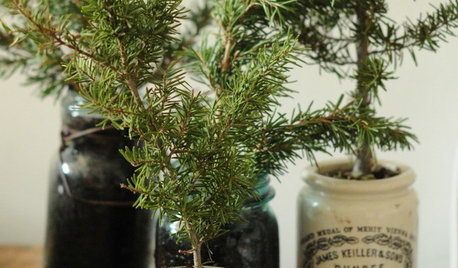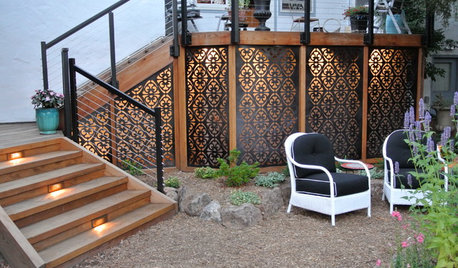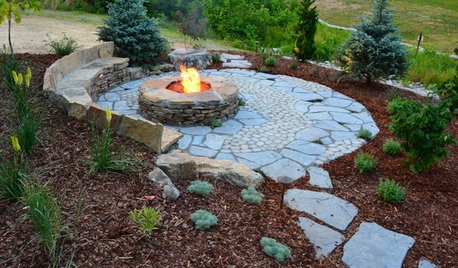trees: cuttings or seedlings strongest?
taragirl
16 years ago
Related Stories

GARDENING GUIDESSeeds or Seedlings? How to Get Your Garden Started
Growing delicious herbs and vegetables starts with knowing your goals and when you want to plant
Full Story
CHRISTMAS TREESLast-Minute Christmas: Mini Tree in a Pot
Create a temporary tree with cuttings or buy a small live tree to love for years
Full Story
THE ART OF ARCHITECTURELaser-Cut Focus: The Future of Design Is Here
Discover how this laser technology can make almost any pattern a reality
Full Story
SIDE YARD IDEASNarrow Trees for Tight Garden Spaces
Boost interest in a side yard or another space-challenged area with the fragrance and color of these columnar trees
Full Story
LANDSCAPE DESIGNThe Unparalleled Power of Trees
Discover the beauty and magic of trees, and why a landscape without them just isn't the same
Full Story
HOLIDAYS10 Ways Your Christmas Tree Can Live On After the Holidays
Learn how to recycle your Christmas tree and reap benefits for the environment
Full Story
EDIBLE GARDENSHow to Add an Apple Tree to Your Edible Garden
Readily available, beautiful and fragrant, apple trees offer four-season interest along with crisp, juicy fruit
Full Story
GARDENING GUIDESPlant Black Cherry Trees for the Birds and Bees
Plant Prunus serotina in the Central and Eastern U.S. for spring flowers, interesting bark and beautiful fall color
Full Story
FALL GARDENING6 Trees You'll Fall For
Don’t put down that spade! Autumn is the perfect time for planting these trees
Full Story
ARBOR DAY8 Reasons to Plant a Great Tree
Beauty is its own reward, but the benefits of planting the right tree in the right place go way beyond looks
Full StoryMore Discussions






kimzone5
georgez5il
Related Professionals
Ballwin Landscape Architects & Landscape Designers · Wareham Landscape Architects & Landscape Designers · Surprise Landscape Contractors · Brunswick Landscape Contractors · Cambridge Landscape Contractors · Costa Mesa Landscape Contractors · Doctor Phillips Landscape Contractors · Fort Payne Landscape Contractors · Mequon Landscape Contractors · Milford Landscape Contractors · Round Lake Landscape Contractors · Welby Landscape Contractors · West Orange Landscape Contractors · New Carrollton Landscape Contractors · Kingsburg Landscape ContractorstaragirlOriginal Author
calistoga_al ca 15 usda 9
conifers